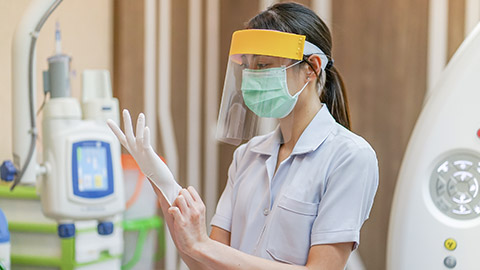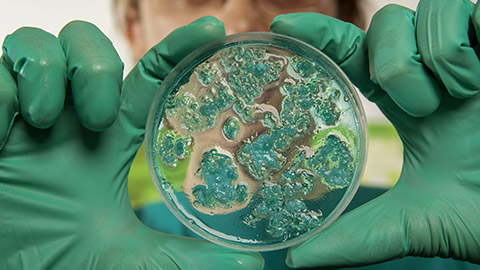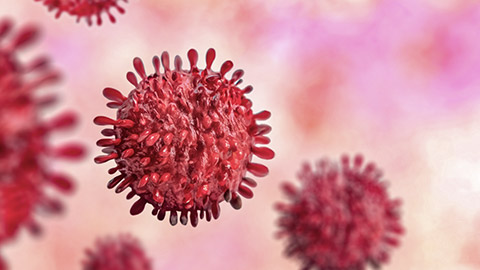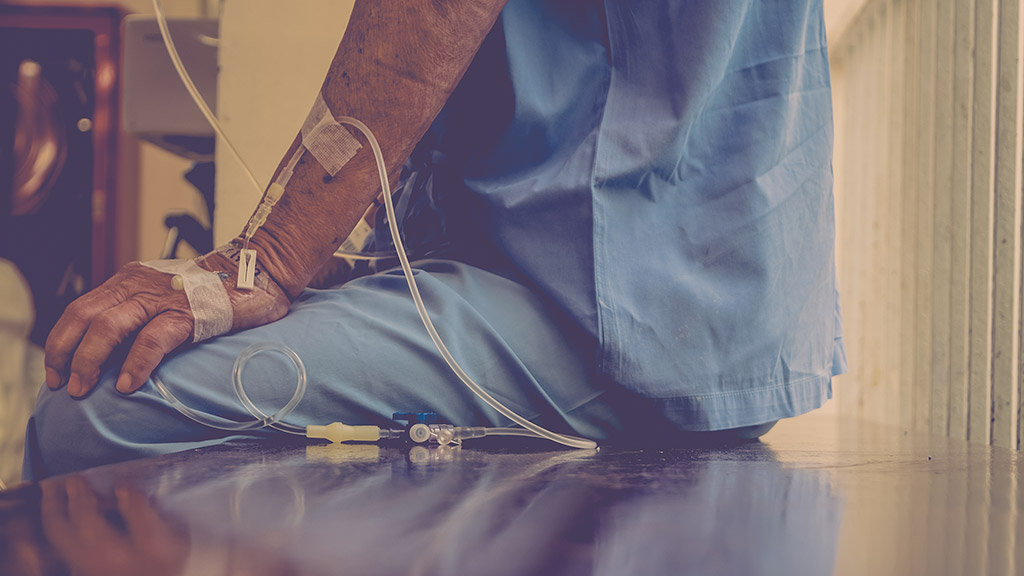In this section you will learn to:
- Identify standards and guidelines relevant to own role and work setting.
- Identify infection risks and hazards associated with own role and work setting.
- Identify roles and responsibilities of self and others in relation to infection prevention and control.
- Identify control measures to minimise risk in accordance with relevant national standards and guidelines.
- Communicate effectively with others in relation to risk management
- Record identified risks and risk management strategies within scope of own role.
Supplementary materials relevant to this section:
- Reading A: Australian Guidelines for the Prevention and Control of Infection in Healthcare
- Reading B: The Infection Prevention and Control Team
We begin this module with an exploration of the role of infection prevention and control in a work setting. The content you will gain here and the resources you will be able to gather are pivotal in your work in the Allied Health field.
Guidelines for infection prevention and control across Australia. Successful infection prevention and control involves implementing work practices that reduce the risk of the transmission of infectious agents through a two-tiered approach, including:
- Routinely applying basic infection prevention and control strategies to minimise risk to both patients and healthcare workers, such as hand hygiene, appropriate use of personal protective equipment, cleaning and safe handling and disposal of sharps
- Effectively managing infectious agents where standard precautions may not be sufficient on their own. These specific interventions control infection by interrupting the mode of transmission (transmission-based precautions; formerly referred to as additional precautions).
The following extract provides you with the common protocols that are followed across the country to prevent and control infection:
Standard precautions are used by healthcare workers to prevent or reduce the likelihood of transmission of infectious agents from one person or place to another, and to render and maintain objects and areas as free as possible from infectious agents.
- Personal hygiene practices, particularly hand hygiene, aim to reduce the risk of contact transmission of infectious agents (see Section 3.1.1).
- Appropriate use of personal protective equipment, which may include gloves, gowns, plastic aprons, masks/face-shields and eye protection, aims to prevent exposure of the healthcare worker and patients to infectious agents (see Section 3.3).
- Safe handling and disposal of sharps assists in preventing transmission of blood‑borne diseases to healthcare workers (see Section3.1.2).
- Environmental controls, including cleaning and spills management, assist in preventing transmission of infectious agents from the environment to patients (see Sections 3.1.3 and 4.6.1).
- Appropriate reprocessing of reusable equipment and instruments, including appropriate use of disinfectants, aims to prevent patient-to-patient transmission of infectious agents (see Section 3.1.4).
- Practicing respiratory hygiene and cough etiquette reduces risk of transmission of infection (see Section 3.1.5).
- Aseptic technique aims to prevent microorganisms on hands, surfaces or equipment from being introduced into a susceptible site (see Section 3.1.6).
- Appropriate handling of waste and linen assists in reducing transmission of infectious agents (see Sections 3.1.7 and 3.1.8).
(Australian Commission on Safety and Quality in Health Care, 2019)
Find out more
The Australian Guidelines for the Prevention and Control of Infection in Healthcare is comprehensive and will be helpful - take a moment to read through - Australian Guidelines for the Prevention and Control of Infection in Healthcare (2019)||Infection prevention and control in the healthcare setting (magicapp.org)
NSQHS Standards Actions to meet the needs of Aboriginal and Torres Strait Islander peoples

The Australian Commission on Safety and Quality in Health Care has defined six actions that specifically meet the needs of Aboriginal and Torres Strait Islander people within the National Safety and Quality Health Service (NSQHS) Standards.
The User Guide for Aboriginal and Torres Strait Islander Health was developed for health service organisations implementing the NSQHS Standards. It also provides practical examples from across Australia that demonstrate that these actions can be, and are being, implemented in health service organisations.
Table 1: The six actions in the National Safety and Quality Health Service Standards that focus specifically on meeting the needs of Aboriginal and Torres Strait Islander people
| Standard | Action |
|---|---|
| Partnering with Consumers Standard | 2.13 The health service organisation works in partnership with Aboriginal and Torres Strait Islander communities to meet their healthcare needs |
| Clinical Governance Standard | 1.2 The governing body ensures that the organisation's safety and quality priorities address the specific health needs of Aboriginal and Torres Strait Islander people 1.4 The health service organisation implements and monitors strategies to meet the organisation's safety and quality priorities for Aboriginal and Torres Strait Islander people 1.21 The health service organisation has strategies to improve the cultural awareness and cultural competency of the workforce to meet the needs of its Aboriginal and Torres Strait Islander patients 1.33 The health service organisation demonstrates a welcoming environment that recognises the importance of cultural beliefs and practices of Aboriginal and Torres Strait Islander people |
| Comprehensive Care Standard | 5.8 The health service organisation has processes to routinely ask patients if they identify as being of Aboriginal and/or Torres Strait Islander origin, and to record this information in administrative and clinical information systems |
Reflect
Take notes and think about how you could use the legislative frameworks and standards as a professional in the Allied Health industry.
Consider: Why it is important to become familiar with and use legislation in your work?
Reading A - Guidelines for the Prevention and Control of Infection in Healthcare
As a healthcare worker being aware of your sources of support within the wards is important. Reading A looks at important information when it comes to supporting the patients and providing them with the greatest of care.

Now that you have been introduced to the standards and guidelines for infection prevention and control, let’s look at how healthcare facilities, its health care workers and patients can play a role in keeping infections at bay. These requirements are common across the majority of health care facilities. Healthcare workers and other persons at the health facility also have duties under the Work Health and Safety Act (2018), such as the duty to take reasonable care for their own health and safety at the workplace.
The Australian Commission on Safety and Quality in Health Care (2022) a provides framework for allied health professionals in their Australian Guidelines for the Prevention and Control of Infection in Healthcare. You must be confident to use and follow these guidelines to ensure you are working with professional and industry standards.
According to Safe Work Australia, (2022):
Risk management should be used for both physical risks and psychological risks in the workplace. Psychological risks are risks to someone’s psychological health (mental health).
(Safe Work Australia, 2022)
Let’s look at the risk assessment strategies that can support you in identifying and controlling risks that you may encounter as a helping professional.
Step 1 - Identify hazards
Hazards are things and situations that could harm a person. You need to look out for what could or could have caused harm at your workplace.
Step 2 - Assess risks
Undertake a risk assessment to identify the hazards in your workplace, which may cause harm (death, injury, or illness). A risk assessment involves looking at what could happen if someone is exposed to a hazard and the likelihood of it happening
A risk assessment can help you work out:
- how severe a risk is
- if your control measures are effective
- what action you should take to control the risk
- how urgently you need to act
You may not need to undertake this step if the hazards, risks, and control measures are well-known.
Step 3 - Control risks
You should always aim to eliminate risks, as this is the best way to manage risks. Where this is not possible, you must minimise risks so far as is reasonably practicable.
To control risks, you can follow the hierarchy of control measures, which are ranked from the highest level of protection and reliability to the lowest.
Step 4 - Review control measures
Review your control measures to make sure they work as planned.
Find out more
The process of managing risks can be quite informative and too detailed for all to be explained here, therefore take a look at the risk management process which can be found in Appendix B of the Model Code of Practice: How to manage work health and safety risks.
Control measures for common hazards and risks

Let’s now look at the most common hazards and risks health care workers might face in a facility and how these can be controlled. It is wise to note that these are the basic and most common hazards; risk management issues will be dealt with later in this study guide.
Biological and chemical hazards (i.e., Sodium Nitrate, aerosolised medications, anaesthetic gases)
Control measures:
- ensuring everyone has access to hygiene facilities and products, such as handwashing and eye washing stations.
- storing chemicals safely and securely and keep a chemical register with the relevant safety data sheets (SDS).
- having appropriate and correctly labelled waste receptacles for biological waste, chemicals and sharps.
- being trained about storing, handling, and disposing of biological hazards, chemicals and sharps safely.
- providing PPE, such as gloves, face masks, eye protection and protective clothing.
Find out more
The Australian Work Health and Safety Code of Practice (2018) has been developed to provide practical guidance for people who have duties to manage risks to health and safety under the Work Health and Safety Act and regulations apply in jurisdiction. The legislation is comprehensive therefore it is mandatory that you have a read through the following documents and website:
Model Code of Practice: How to manage work health and safety risks (safeworkaustralia.gov.au)
Model Code of Practice: Hazardous manual tasks (safeworkaustralia.gov.au)

When you are working in a medical environment or around vulnerable patients or clients, it is important to understand the foundations of an infection. Let’s start with the microbes which are universal and may live inside and outside of our bodies and in the surrounding environment such as in water, food, vegetables, and animals. Microbes not only contribute to the maintenance of a healthy host but are also essential for our survival. They also act as a protective barrier in resisting the establishment of organisms that cause disease. A classic example of this is when an antibiotic is prescribed to us when we are sick, as it kills and disturbs harmful organisms. Let’s take a look at the main microbes that cause infections.
Fungi
These organisms have a complex cell structure, like those of humans and animals. Usually, fungi exist either in the form of moulds or yeasts which are oval or spherical and grow by budding. For example, the fungi group “candidiasis’ is a common skin disease caused by poor health or the overuse of antibiotics, leading fungi to multiply and cause infections such as thrush.
Bacteria and viruses
Bacteria are simple and largely self-sufficient unicellular organisms. Different bacteria have different growth characteristics. Strictly aerobic bacteria need oxygen to grow; strictly anaerobic bacteria cannot grow in the presence of oxygen, while facultative anaerobic bacteria can grow in the presence or absence of oxygen. Some bacterial spores are extremely refined and can survive most forms of disinfection, this means they will continue to grow regardless of the environment they are in, thus causing an infection.
Viruses, on the other hand, are incapable of independent survival and require host cells for growth and reproduction. They are a much smaller size and provide a relatively high degree of immunity following infection and may require antiviral agents to treat infections as the antibiotics used to treat bacterial infections are not effective. They cause infection by invading the cell and taking control of their cellular mechanisms to reproduce. They then attach themselves and inject their genes into the cell.
Parasites
Parasites are organisms that live off other organisms, or hosts, to survive. Some parasites don’t noticeably affect their hosts. Others grow, reproduce, or invade organ systems that make their hosts sick, resulting in a parasitic infection.
Parasitic infections can be caused by three types of organisms:
- protozoa - single-celled organisms that can live and multiply inside the body.
- helminths – are multi-celled organisms that can live in or outside of the body. They are most commonly known as worms (e.g., flatworms, tapeworms, thorny-headed worms, and round words).
- ectoparasites - multicellular organisms that live on or feed off your skin. They include some insects and arachnids, such as mosquitos, fleas, ticks, and mites.
Now that you have an idea of the classification of microorganisms, let’s take a look at the process of infection.
Process of infection
-
Colonisation
- This takes place when the microbes are present without any host interaction. No harm has taken place at this point.
-
Infection
- Now that the microorganism has entered the host, the two starts interacting, leading up to an infectious disease or an illness.
-
Disease
- The host has now been infected and displays a decline in their wellness due to the infection. The disease would usually be a medical condition that involves a pathological process.
Did you know?
There are three (3) types of diseases that can affect a host:
- Localised diseases which affect specific parts of the body
- Disseminated diseases which spread to other parts of the body
- Systemic diseases which affect the entire body
Can you think of any exemplar diseases that might fall under these categories?

Now that you have understood infections are caused, let’s take a look at how these infections are transmitted to the host. The establishment of an infection in the body is depended on the three main factors:
Number of Microbes
Each microorganism has a set infective dose. Microorganisms which have low infective doses spread more faster than those microorganisms which have high infective doses. In addition, if the person is immunosuppressed (meaning they have low immunity or have a disease causing them to be susceptible to illness) the infective dose required to cause infection is even lower.
Immune status of patients
As HCWs, we need to identify the immune status of the patients entering a healthcare facility. This is also one of the most important factors as patients who are elderly or immunosuppressed are more susceptible to infection. In addition, patients who are immunised or who have been exposed to certain infectious disease (e.g., chickenpox) are less likely to get the same disease. It is important to note that exposure to a microorganism does not always necessarily lead to infection and the figure below summarises the possible outcomes:
Due to underlying illness, immunosuppressive therapy, and invasive procedures, hospitalised patients are more prone to develop infections. They can acquire infection either from an external route, where the source microorganisms are acquired from health care environment, equipment and from health care workers; or, via an internal route where the source of microorganisms is from the patient’s own microflora. External infections are commonly seen in immunocompromised patients.
Infectious agent
Infectious agents (pathogens) include not only bacteria but also viruses, fungi, and parasites. The virulence of these pathogens depends on their number, their potency, their ability to enter and survive in the body, and the susceptibility of the host. Let’s take for example, the smallpox virus is particularly virulent, infecting almost all people exposed. In contrast, the tuberculosis bacillus infects only a small number of people, usually people with weakened immune function, or those who are undernourished and living in crowded conditions.
Reservoir of infection
In this section will explore where the infectious microbes live – this can be inside or outside the hosts. We will also briefly look at the many ways they move from one host to another. Although you might think that being a health administrator does not require you to understand how infectious microorganisms spread, it is best that you do. It is important to know that a microbe does not necessarily need a living host to survive; some might be able to persist in a dormant state outside of a living host.
Likewise, a reservoir of infection could be an infected person, animal, items/equipment, and/or the environment on which microorganisms can survive and, in some cases, multiply. Animals and human beings can all serve as reservoirs, providing the essential requirements for a microorganism to survive at specific stages in its life cycle. Think of these reservoirs at the home nurturing these infections and then slowly letting them escape onto a host.
Animal reservoirs
Humans are also subject to diseases that have animal reservoirs. Many of these diseases are transmitted from animal to animal, with humans as incidental hosts. Long recognised zoonotic diseases include anthrax (sheep), plague (rodents) and monkeypox (prairie dogs). Many newly recognised infectious diseases in humans, including HIV/AIDS or Ebola infection are thought to have emerged from animal hosts, although those hosts have not yet been identified.
Environmental reservoirs
These are usually plants, soil and water. Many fungal agents live and multiply in the soil. Outbreaks of lung diseases are often traced to water supplies in cooling towers and evaporative condensers, which act as the reservoirs for the microbe causing these infections.
Other vectors
Infectious reservoirs are always in health care settings, and may include everything from patients, visitors, and staff members to furniture, medical equipment, food, water, and blood. A human reservoir may be either an infected case or a carrier.
Carriers fall into four categories:
- An incubatory carrier is one who has an infection but does not yet show symptoms (e.g., a person with an asymptomatic COVID-19 infection).
- A convalescent carrier is in the recovery stage of an illness but continues to shed the pathogenic microorganism for an indefinite period, e.g., a patient who has had a Salmonella infection commonly sheds the organism in their faeces even after symptoms disappear.
- An intermittent carrier occasionally sheds the pathogenic microorganism from time to time. For example, some people are intermittent carriers of Staph. aureus.
- A chronic carrier always has the infectious organism in their system, e.g., chronic carriers of hepatitis B and C virus. Asymptomatic carriers may present a risk of cross infection in health care facilities because their illnesses go unrecognised and therefore adherence to standard infection control prevention is essential at all times.
Blood and body fluids
This type of infection may occur when someone’s blood gets into another person’s system. This can happen when sharps are not handled with care, or gloves not used for procedures where there is a risk of exposure to blood (e.g., cuts).
Waste
This is when an infection hangs onto a host when the microorganisms leave the body of the infected person by means of body secretions (e.g., stool and vomit).
Portal of exit
This is usually the exit pathway where an infectious agent leaves its reservoir. Usually, this portal is the site where the microorganism also grows. Common portals of exit associated with human reservoirs include the respiratory, genitourinary, and gastrointestinal tracts, the skin, and mucous membranes.
As HCWs you will be openly exposed to many sicknesses; however, knowing the precautionary measures and the transmission routes of this microbes will enable you to understand how to keep safe.
1. Contact transmission – this is known to be the most frequent mode of transmission of health care associated infections (HCAIs). It occurs when microorganisms are transferred from one infected person to another person. This can occur either as:
- Direct contact - when there is physical contact with a patient, e.g., during activities such as bathing, dressing changes, insertion of needles and maintenance of invasive devices such as a respirator or catheter. There are two ways of direct contact transmission;
- Droplet transmission - this occurs when microorganisms come into contact with the mucous membranes of a person’s nose, mouth, eyes, etc. such as when an infected person coughs, sneezes, or talks. Droplet transmission differs from airborne transmission in that the droplets are heavy and therefore do not remain suspended in the air for a long time and settle on surfaces very quickly. In order to prevent transmission via this route, it is recommended to wear a surgical mask when within 1.8–3 metres of the patient or upon entry into the patient’s room. In addition, it is essential that overcrowding of patients is avoided and adequate spacing between patients is kept.
- Airborne transmission – this occurs when pathogens are transmitted to a susceptible person though inhalation of small droplet nuclei of particle size. Therefore, health care workers (HCWs) should wear a respirator when close to potentially infectious patients. Ideally, these patients should be in an isolation room with negative pressure ventilation to dilute and remove the infective microorganisms safely.
2. Indirect transmission - indirect contact transmission occurs when an infectious agent is transmitted through a contaminated intermediate object (items and equipment’s) or person. Use of personal protective equipment is used as an additional barrier to prevent contamination of clothing, e.g., uniforms when with infected/colonised individuals. Hands are contaminated not only after touching infected/colonised patients but also by touching contaminated items/equipment and environment; therefore, hand hygiene is key in preventing this mode of transmission.
Portal of entry
This is the path by which an infectious agent invades a susceptible host; after all, the microbes need to find the way into another person so it can keep growing and passing on the infection. This can be brought through the eyes and mouth, hands, open wounds, and any tubes put into the body such as a catheter or feeding tube.
Susceptible host
The final and most important link in the chain of infection is the susceptible host. The human body has many defence mechanisms for resisting the entry and multiplication of pathogens. When these mechanisms function normally, infection does not occur. However, in immunocompromised patients where the body defences are weakened, infectious agents are more likely to invade the body and cause an infection.
In addition, young infants and the elderly are at higher risk for infection because in the very young, the immune system does not fully develop until about 6 months of age, while old age is associated with declining immune system function as well as with chronic diseases which also weaken host defences.
Factors that increase susceptibility
The host’s vulnerability to any infection is usually affected by factors such as nutritional status, intercurrent disease, pregnancy, immunosuppressive drugs and malignancy. Previously mild or clinically inapparent infections can produce dangerous disease when the host’s immunity falls.
Types of infectious risks
An infection is classified as HCAI if it was not present or incubating at the time the patient was admitted to the health care facility. Infections should be considered as HCAIs if they are related to procedures, treatments, or other events. As a health care worker, you might notice most HCAIs are identified before the patient is discharged, although some are incubating at discharge and do not become apparent until later.
The four most common HCAIs are:
- Urinary tract infections which are mostly associated with the use of urinary catheters
- Lower respiratory tract infections which are mainly associated with ventilated patients in the ICU
- Surgical site infections
- Bloodstream infections mainly associated with the use of intravascular devices.

Your job description is going to be your best guide to inform you of what your role is and who you are accountable to in the organisation. However, protection of health care workers (HCWs) should be an integral part of the health and safety programme of all health care facilities. Health care facilities have a legal obligation to ensure that all their employees are appropriately trained and proficient in the procedures necessary for working safely. Let’s take a look at the different roles of individuals employed at a clinic.
Responsibilities of health care workers
HCWs are the front line of any infectious outbreak and as such are exposed to hazards that put them at risk of infection. You would always need to comply with the following guidelines:
- Ensuring the safe use and handling of good and substances
- Follow workplace guidelines for infection prevention and control.
- Report notifiable incidents to Workplace Health and Safety within the State or Territory they are employed in.
- Managers would need to investigate incidents and take action to avoid having something similar happen again.
- HCWs should not come into work if they are feeling unwell.
- HCWs are always required to wear personal protective equipment if your employer provides it and you have been trained.
- Do not wilfully place your other colleagues at risk or injure yourself.
Find out more
To further understand your obligations and safety requirements as an employee, you can read through the following guidelines to become familiar with the Work Health and Safety codes of practice - https://www.worksafe.qld.gov.au/laws-and-compliance/codes-of-practice
Education and training
All health administrators must be given adequate education and practical training on all issues relating to IPC as part of their induction/orientation programme. In saying that it is the employee’s responsibility to make sure their continuous professional developments are up-to-date and if there are any training, they require they can request it from their manager or in some instances be compensated for using an external provider at their own cost.
Staff must have the competency or ability to undertake tasks or clinical interventions, and part of this ability means possessing the necessary knowledge and skills. There are several areas of clinical practice in relation to infection prevention and control where clinical staff are formally required to demonstrate competency. For example:
- Peripheral cannula insertion
- Urinary catheter insertion
- Blood culture collection
Other areas of clinical practice where competency is required but may not be formally assessed are:
- Surgical hand antisepsis (surgical scrubbing)
- Hand washing and application of alcohol hand rub
- Insertion and management of bowel management systems (used for patients with fecal incontinence or intractable diarrhoea)
- Specimen collection (may result in an inappropriately sized specimen being obtained, or contamination of the specimen)
- Endoscope decontamination.
(Weston, 2013)
Reading B - The Infection Prevention and Control Team
As a healthcare worker being aware of your sources of support within the wards is important. Reading A looks at important information when it comes to supporting the patients and providing them with the greatest of care.
This module will give you clear indicators of your role and others in infection control and prevention. This means strategies such as hand hygiene, personal protection equipment (PPE) and the appropriate handling and disposal of sharps.
As you are working with integrity in your role, the reality is that there will be several stakeholders that you are responsible for. The scale below shows you where the most weight in preventing infection lies on.
Taking into consideration legislative frameworks can also guide you. An example of this is the Work Health and Safety Act NSW. In this you will determine if you are a Person Conducting a Business or Undertaking (PCBU). This is critical, according to Safe Work Australia (2021), as there is duty of care to take into consideration.
The primary duty of care requires PCBUs to ensure, so far as is reasonably practicable, the:
- provision and maintenance of a safe work environment
- provision and maintenance of safe plant and structures
- provision and maintenance of safe systems of work
- safe use, handling and storage of plant, structures, and substances
- provision of accessible and adequate facilities (for example access to washrooms, lockers, and dining areas)
- provision of any instruction, training, information, and supervision
- monitoring of workers health and conditions at the workplace and
- maintenance of any accommodation owned or under their management and control to ensure the health and safety of workers occupying the premises.
(Safe Work Australia, 2021)
Find Out More
Review the information from Safe Work Australia (2021) in regard to responsibility of self and others, based on the Work Health and Safety Act (2011).
Following standards, as highlighted by Department of Health, 2021 in Victoria Infection control, standard and transmission-based precautions is a must in infection control. Your effective work role in Allied Health is to follow professional protocol to keep yourself and others safe.
You have a responsibility to yourself to ensure you are doing the best possible job in the Allied Health Field. Knowing your industry and linking in with peak bodies, such as Allied Health Professions Australia will give you a clear picture of the Allied Health profession as a whole and where you might fit into the picture.
Keeping in check your mental and emotional, as well as physical health means that you are bringing your best self to your work role. There are a range of resources available to you on the Allied Health Professions Australia website.
You can use a risk management approach such as that set out in the Australian/New Zealand Standard Risk Management – Principles and guidelines, or your organisation may use a general risk analysis matrix, such as the matrix below:
| Likelihood | Consequences | ||||
|---|---|---|---|---|---|
| Negligible | Minor | Moderate | Major | Extreme | |
| Rare | Low | Low | Low | Medium | High |
| Unlikely | Low | Medium | Medium | High | Very High |
| Possible | Low | Medium | High | Very High | Very High |
| Likely | Medium | High | Very High | Very High | Extreme |
| Almost certain | Medium | Very High | Very High | Extreme | Extreme |
| Low risk | Manage by routine procedures. | ||||
| Medium risk | Manage by specific monitoring or audit procedures. | ||||
| High risk Very high risk Extreme risk |
This is serious and must be addressed immediately. The magnitude of the consequences of an event, should it occur, and the likelihood of that event occurring, are assessed in the context of the effectiveness of existing strategies and controls. |
||||
Australian Guidelines for the Prevention and Control of Infection in Health Care (NHMRC 2010) basic principles of risk management are to:
- The health system - the risk may be outside the control of an organisation.
- The organisation - the risk may be corporate or clinical in nature.
- The team who are delivering the care - the risk may come from the pattern of
- work or team dynamics.
- The individual - the risk may be skills, knowledge or situationally based.
To minimise risks, you will need to identify:
- Who is at risk?
- What is involved?
- Why can it happen?
- How likely is it?
- What are the consequences?
- What can be done?
- Is the solution applied to the situation/risk identified?

Using targeted questions gives focus to the effectiveness of the responses that can clarify or seek input of further information in the Allied Health field. According to the Australian Commission on Safety and Quality in Health Care (2019) some examples could include:
| Relevant to | Targeted questions |
|---|---|
|
|
|
|
|
|
|
|
|
|
Reflect
Take a moment to have a look at this link https://www.safetyandquality.gov.au/our-work/communicating-safety In particular, reflect on the Communicating for safety resource portal and the Informed Consent link to be best informed as an Allied Health professional.
Take a look at the following exemplar documentations that would be used in the Health Industry, which support you in understanding and enabling clear communication:
This section of the module provided you with standards and guidelines, as well as infection risks and hazards in a work setting. With this professional focus you will develop your understanding in roles and responsibilities of self and others and how to identify control measures to minimise risk. In this, you will learn how to identify and respond to requirements of transmission-based precautions.
Allied Health Professions Australia. (2023). Allied Health and mental health. https://ahpa.com.au/key-areas/mental-health/
Allied Health Professions Australia. (2023). Allied Health Professions. https://ahpa.com.au/allied-health-professions/
Australian Commission on Safety and Quality in Health Care. (2019). Examples of IPC risk considerations and risk assessment questions. https://www.safetyandquality.gov.au/sites/default/files/2020-08/guidance_-_covid-19_infection_prevention_and_control_risk_management_002_0.pdf
Australian Commission on Safety and Quality in Health Care. (2022). The NSQHS Standards. https://www.safetyandquality.gov.au/standards/nsqhs-standards
Australian Commission on Safety and Quality in Health Care. (2022). Shared decision making. https://www.safetyandquality.gov.au/our-work/partnering-consumers/shared-decision-making
Australian Commission on Safety and Quality in Health Care. (2022). Informed consent. https://www.safetyandquality.gov.au/our-work/partnering-consumers/informed-consent
Australian Commission on Safety and Quality in Health Care. (2022). Australian Guidelines for the Prevention and Control of Infection in Healthcare. https://www.safetyandquality.gov.au/publications-and-resources/resource-library/australian-guidelines-prevention-and-control-infection-healthcare
Australian Government. (2019). Australian guidelines for the prevention and control of infection in health. https://app.magicapp.org/#/guideline/6572
Department of Health Victoria. (2021). Infection control standard and transmission based precautions. https://www.health.vic.gov.au/infectious-diseases/infection-control-standard-and-transmission-based-precautions
npr. (2021). [Image of multiple people wearing different coloured masks]. https://www.npr.org/2021/07/20/1018380783/everyone-should-wear-a-mask-in-schools-vaccinated-or-not-u-s-pediatricians-say
Safe Work Australia. (2018). Model Code of Practice: How to manage work health and safety risks. https://www.safeworkaustralia.gov.au/doc/model-code-practice-how-manage-work-health-and-safety-risks
Safe Work Australia. (2022). Identify, assess and control hazards. https://www.safeworkaustralia.gov.au/safety-topic/managing-health-and-safety/identify-assess-and-control-hazards
Safe Work Australia. (n.d.). Duties of a PCBU. https://www.safeworkaustralia.gov.au/law-and-regulation/duties-under-whs-laws/duties-pcbu#:~:text=As%20a%20PCBU%2C%20you%20have,far%20as%20is%20reasonably%20practicable.
Weston, D. (2013). Fundamentals of infection prevention and control: Theory and practice. Wiley Blackwell.
